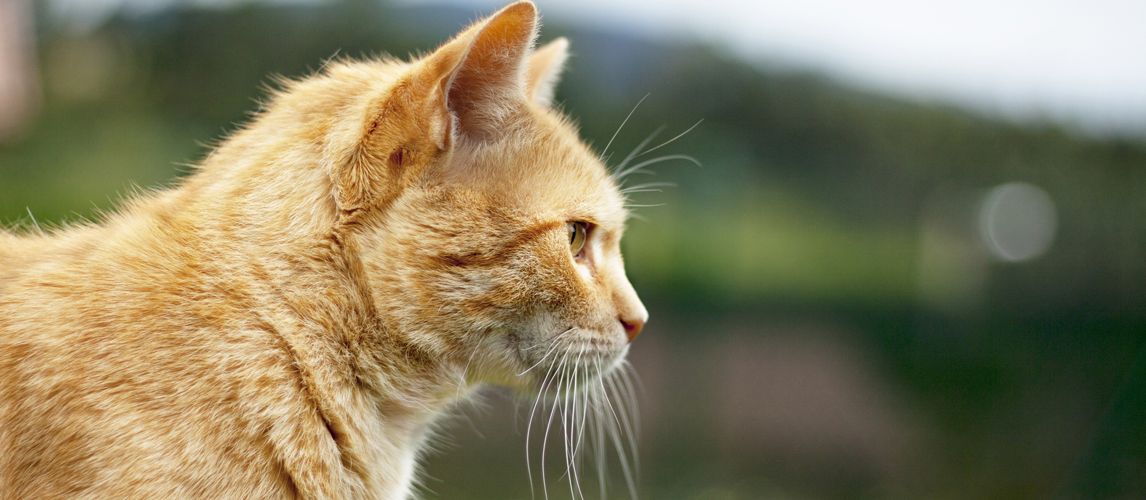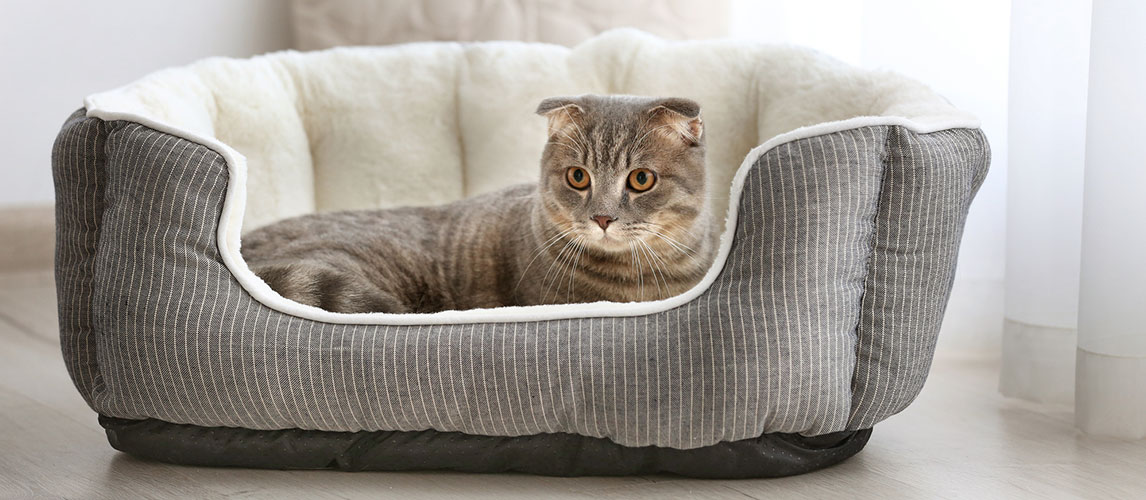Cats are well known for being able to take care of themselves, and while this is true in some respects, there are sometimes when we need to step in. Cold weather is one of those times. So how do you know when it’s too cold for your cat?
Myths and Misconceptions
As cats are quite independent, there are a number of myths and misconceptions around how to keep them warm in cold weather.
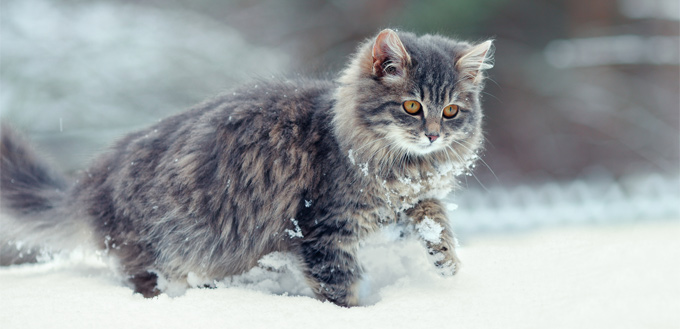
Freezing Temperature Is Too Cold
This misconception both is and isn’t true. Freezing temperatures of 32°F or 0°C mean that there is an increased risk of frostbite and hypothermia, but your cat may be uncomfortable even at higher temperatures. It depends on the individual cat. Younger cats may be able to withstand colder temperatures than older cats or cats who are unwell or have arthritis. It will also depend on how much access to food the cat has. They will need more calories if they’re going to be outside in cold weather. It also depends on whether the cat has regular outdoor access, or is an indoor only cat. Cats who go outside are probably more familiar with the area and will know where the best shelter is. Indoor only cats won’t have any such knowledge and can be more likely to panic if they find themselves outside.
Long-Haired Cats Can Withstand Cooler Temperatures
Some people believe that cats who have long hair are able to withstand colder temperatures. It is true that some breeds of cat have coats that are able to keep them a little warmer in cold weather, but they can still be susceptible to hypothermia and frostbite.
- Hypothermia can occur when the body temperature drops below 100 °F, or 37.8°C. Normal body temperature for a cat can vary according to the breed, but as a general guideline, it’s usually 102°F, or 38.9°C.
- Frostbite can occur on any part of the body that has been exposed to cold temperatures for prolonged periods of time. It is more common on the ears, the tail and the pads of the paws. It can take a few days for you to notice the signs of frostbite, which can mean that it can worsen. Both frostbite and hypothermia will need to be treated by your veterinarian.
The Cat Can Stay in the Car
Most people know that you can’t leave your cat, or any pet, in the car on a hot day, but many people think that they’ll be fine in the car during cooler temperatures. Actually, a cold car is just as dangerous as a hot car. It essentially becomes a refrigerator, and cats can develop hypothermia quite quickly in these conditions.
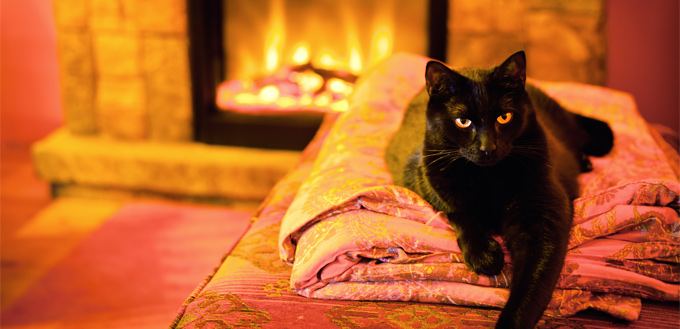
The Cat Can Stay in the Garage
While your garage may seem like an ideal place for your cat in cold weather, it really isn’t. Most garages can have hidden dangers. Things like antifreeze, chemical cleaners, and ice melting chemicals are stored in the garage, and these items are toxic to cats. They can be poisoned by even licking antifreeze from their fur.
Some people store their cars in their garage. Cars can seem like a warm place to sleep, so you should always make sure that your cat hasn’t climbed up into the engine or the wheel well for a nap before turning on the ignition.
Feral Cats Will Be Fine
Feral cats live outside all the time, but even in winter, they may need some extra help. You can provide a shelter, or make a shelter from rubber totes, straw, and styrofoam. Make sure that they have access to water and food. Check the water regularly in case it has frozen. You can get insulated bowls which help to keep the water liquid.
You May Also Like: Cat Water Fountain
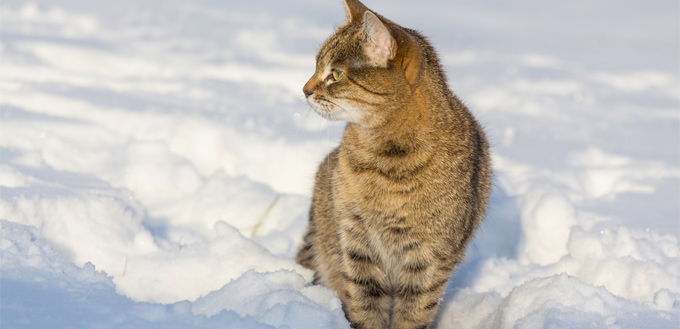
Keeping Your Cat Warm
If your cat lives exclusively indoors, you might think that he should be warm enough, even in the colder months, but this may not be true.
- Thermostat: As a rule of thumb, if your house feels cold to you, then it’s cold for your cat as well. Increasing your thermostat by even a few degrees can make all the difference.
- Move His Bed: Your cat might change his preferred sleeping spot. In the winter months, indoor cats may go to the warmest place in the house. You can move his bedding to somewhere without a draft.
- Windows: Keep the curtains and blinds open during the day to let your cat enjoy the sunshine. You may want to set up a few different beds for him in all the areas that catch the sun, especially if he’s older or has arthritis.
- New Bedding: Your cat might appreciate some new bedding to sleep on in the colder weather. Look for comfortable padding and warm fabrics. Faux furs and fleeces are great for him to snuggle down in. You should also think about how your cat likes to sleep. If he likes to curl up, then he might prefer a round bed. If he stretches out, then he’ll need enough room to do this. If he’s a little nervous, then he might feel more comfortable in a hooded bed.
- Heated Bedding: Some cats love nothing more than a heated cat bed in the winter months. They come in many different shapes and sizes, so you’re bound to find one that meets your cat’s needs. You should look for one that has an automatic shut-off feature, as prolonged use may burn the skin.
- Food: Cats will need more calories in colder weather, even if they do live exclusively inside. Make sure that your cat has enough to eat, and make sure that it’s a high-quality cat food. You’ll also need to be sure that he has access to plenty of water as well.
Sources:
- Hazardous Weather, International Cat Care
- Hannah Beers, Common Sense Approach to Pets’ Cold Weather Needs, College of Veterinary Medicine
- Keeping Dogs and Cats Warm and Safe in Winter, Best Friends Animal Society
Note: The advice provided in this post is intended for informational purposes and does not constitute medical advice regarding pets. For an accurate diagnosis of your pet's condition, please make an appointment with your vet.




